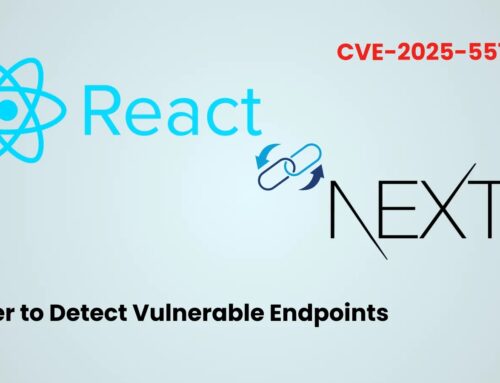
Threat Actors Leverage JSON Storage Services to Host and Deliver Malware Via Trojanized Code Projects
Unmasking “Contagious Interview”: Threat Actors Weaponize JSON Storage for Malware Delivery
In a cunning evolution of attack vectors, cybersecurity researchers have unearthed a sophisticated campaign dubbed “Contagious Interview.” This operation marks a concerning pivot, revealing how threat actors are now leveraging seemingly innocuous, legitimate JSON storage services to host and deliver malware. This alarming tactic specifically targets software developers, embedding malicious payloads within what appear to be legitimate development projects.
The campaign exploits popular platforms like JSON Keeper, JSONsilo, and npoint.io – services frequently used for rapid data storage and sharing in development workflows. By weaponizing these trusted resources, attackers effectively bypass traditional security measures, significantly upping the ante for supply chain security in the software development ecosystem.
The Mechanics of Malice: How JSON Storage Becomes a Launchpad
Threat actors are demonstrating a clear understanding of developer workflows and the trust placed in common development tools and services. Instead of relying on overtly suspicious infrastructure, they’re injecting malicious code into projects shared through or referencing data from these legitimate JSON storage services. This method offers several advantages to the attackers:
- Evasion of Detection: Network traffic to and from services like JSON Keeper or npoint.io is generally considered benign, allowing malicious payloads to slip past perimeter defenses.
- Credibility and Trust: Developers are less likely to scrutinize code or data fetched from established, reputable services.
- Dynamic Payload Delivery: JSON storage offers a flexible way to update and modify payloads without changing the core malicious code embedded in a project.
- Supply Chain Infiltration: By infecting development projects, attackers gain a foothold early in the software development lifecycle, potentially impacting numerous downstream users.
The “trojanized code projects” often appear as benign utility libraries, example code, or development dependencies. When a developer incorporates such a project, the embedded malicious code fetches its next-stage payload or configuration from a URL hosted on one of these legitimate JSON storage services. This multi-stage approach adds another layer of obfuscation and resilience to the attack.
Targeting Developers: The New Frontier of Supply Chain Attacks
The focus on software developers is strategic. Developers are conduits to an organization’s intellectual property, sensitive data, and ultimately, its end-users. Compromising a developer’s environment can lead to:
- Intellectual property theft.
- Insertion of backdoors into legitimate software products.
- Espionage and data exfiltration.
- Lateral movement within an organization’s network.
- Reputational damage and financial loss for affected organizations.
While specific CVEs for this broader campaign are not yet assigned, the underlying principle often involves vulnerabilities in dependency management or insecure coding practices. Similar to previous supply chain attacks like the CVE-2021-44797 (dependency confusion) or the CVE-2021-29922 (npm package compromise), “Contagious Interview” highlights the persistent challenge of securing the software supply chain.
Remediation Actions for Developers and Organizations
Mitigating the risk posed by campaigns like “Contagious Interview” requires a multi-faceted approach, emphasizing heightened vigilance and robust security practices throughout the development lifecycle.
- Strict Code Review: Implement rigorous peer code review processes, paying close attention to external dependencies and their origins. Manually inspect code for suspicious HTTP requests to unfamiliar domains or JSON storage services.
- Dependency Verification: Always verify the authenticity and integrity of third-party libraries and packages before integrating them. Use checksums, digital signatures, and trusted repositories.
- Supply Chain Security Tools: Employ Software Composition Analysis (SCA) tools to identify and track open-source components and their known vulnerabilities.
- Least Privilege Principle: Ensure development environments and build servers operate with the minimum necessary permissions.
- Network Monitoring: Implement network traffic monitoring to detect unusual outbound connections from development machines to
unapproved external services, particularly to generic JSON storage sites. - Security Training: Educate developers about common social engineering tactics and the dangers of incorporating unverified code or interacting with suspicious project links.
- Endpoint Detection and Response (EDR): Utilize EDR solutions on developer workstations to identify and block suspicious process behavior and file modifications.
Here’s a table of relevant tools that can aid in detection and mitigation:
| Tool Name | Purpose | Link |
|---|---|---|
| OWASP Dependency-Check | Identifies project dependencies and checks for known vulnerabilities. | https://owasp.org/www-project-dependency-check/ |
| Snyk | Developer security platform for finding and fixing vulnerabilities in code, dependencies, containers, and infrastructure. | https://snyk.io/ |
| Sonatype Nexus Lifecycle | Automated open source governance, helping identify vulnerable components. | https://www.sonatype.com/products/nexus-lifecycle |
| TruffleHog | Scans repositories for exposed secrets, which can often be used for further compromise. | https://trufflesecurity.com/trufflehog/ |
Conclusion
The “Contagious Interview” campaign underscores a critical shift in how threat actors are exploiting trust relationships within the software development ecosystem. By co-opting legitimate JSON storage services, they introduce a significant challenge to traditional security paradigms. Organizations and individual developers must recognize the growing sophistication of supply chain attacks. Proactive security measures, thorough vetting of dependencies, continuous monitoring, and developer education are paramount to defending against these evolving threats and ensuring the integrity of the software supply chain.





